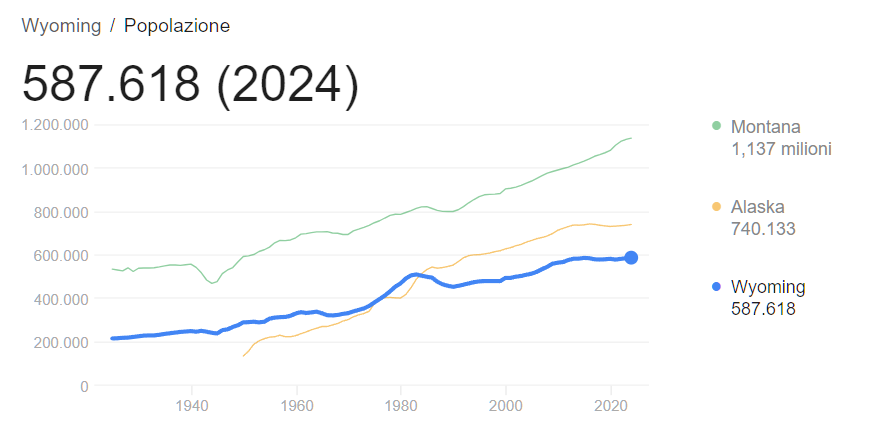
The U.S. state of Wyoming, with a population of just under 600,000, could have a data center that consumes more electricity than the state’s entire population. The project, led by energy company Tallgrass and AI infrastructure developer Crusoe, calls for the construction of a 1.8 gigawatt facility, which could be expanded to as many as 10 gigawatts.
At launch, the data center will consume approximately 15.8 terawatt-hours per year, five times more than all the single-family homes in Wyoming. If the facility reaches its stated maximum capacity, its annual energy consumption will be 87.6 terawatt-hours, double the current output of the entire state, which currently has a population of 587,000.

Connecting to the grid with such a load has been deemed impossible, so the center will operate with autonomous energy, which will include gas generation and renewables. A new AI-powered energy center is planned for the south, near Highway 85 and the Colorado border, according to Patrick Collins, mayor of Cheyenne, Wyoming’s capital.
“It’s a game-changer. It’s huge,” Mayor Patrick Collins said Monday.
Wyoming Gov. Mark Gordon released a statement supporting the initiative, underscoring its importance for the state’s natural gas industry. However, it has not yet been revealed who exactly will use the center’s computing power. This has fueled speculation about a possible connection to OpenAI’s massive Stargate program, a hypothetical future infrastructure announced in January 2025 but not yet publicly associated with specific locations.
Although a Crusoe representative declined to confirm or deny its involvement in the Stargate project, it’s worth noting that the company has already built similar facilities in Texas, including in Abilene, where OpenAI and Oracle have collaborated. The Texas facility operates at about one gigawatt and is already considered the largest data center in the world, according to OpenAI spokesperson Chris Lehane.
Additionally, OpenAI had previously announced plans to build an additional 4.5 gigawatts of power computing in partnership with Oracle, without disclosing all locations. Wyoming was not among the 16 states considered, which further fueled interest in the current announcement.
It’s important to note thatWyoming, with its cold climate, low population density, and rich energy infrastructure, is no stranger to data center deployments: Microsoft and Meta have been operating in the region since 2012. But this particular project puts the region in an entirely different league,pushing energy consumption to levels previously unimaginable even for megacities. It also signals a fundamental shift in the strategy for deploying computing power, moving away from cloud centers in densely populated areas and toward autonomous industrial cluster systems in remote energy hubs.
If the initiative receives regulatory approval, construction could begin soon.
Collins himself expressed confidence that the partners are eager to get the project underway as quickly as possible. However, even with its own energy sources, such a large-scale infrastructure could have a significant impact on the environmental, transportation, and social landscape of southern Wyoming, as well as redefine the region’s role in the architecture of global artificial intelligence.
Follow us on Google News to receive daily updates on cybersecurity. Contact us if you would like to report news, insights or content for publication.
